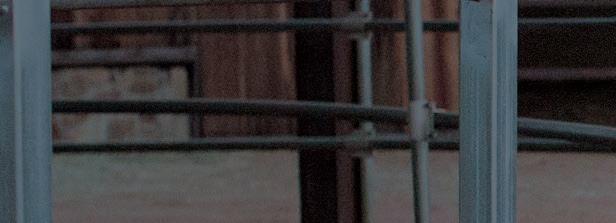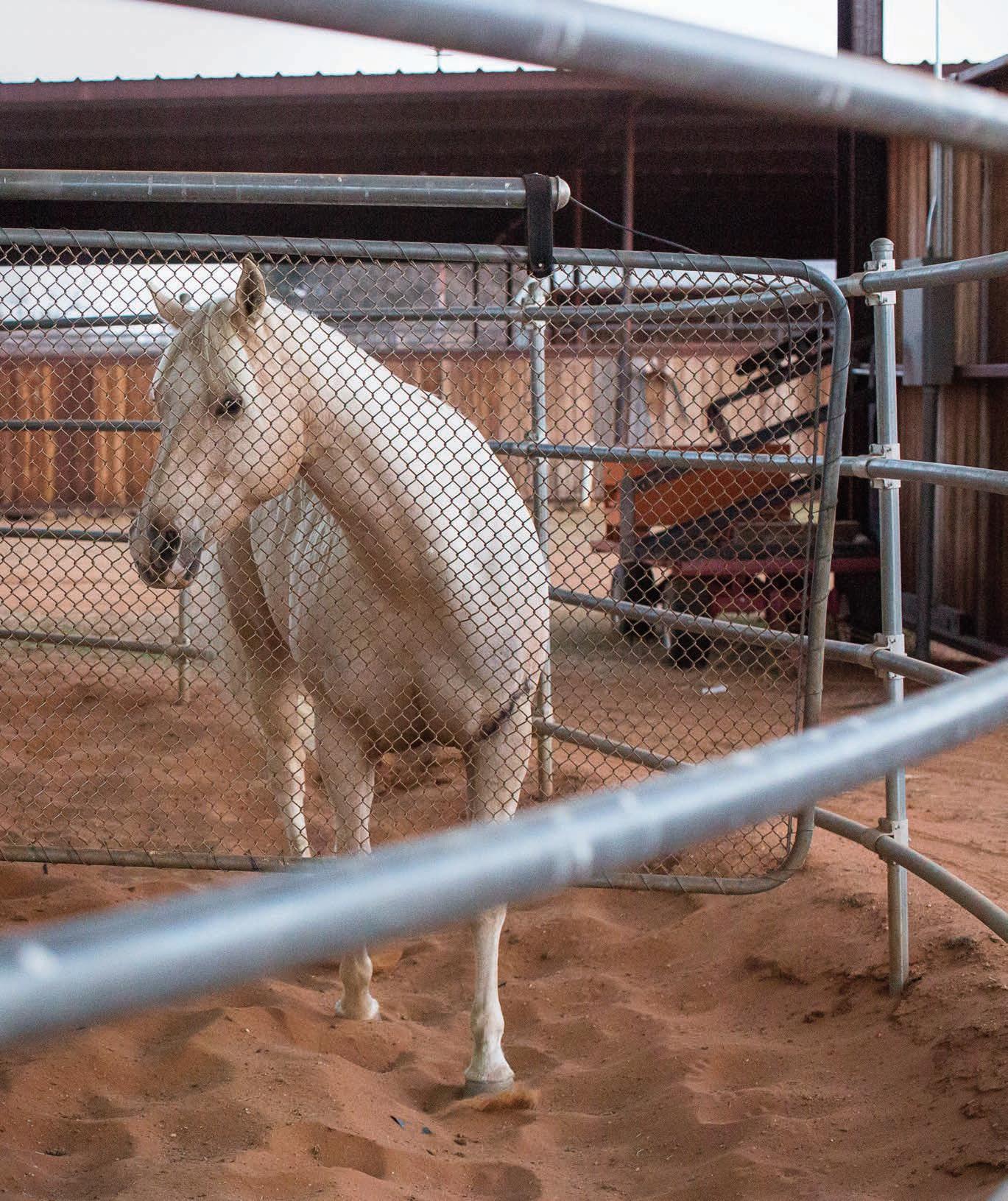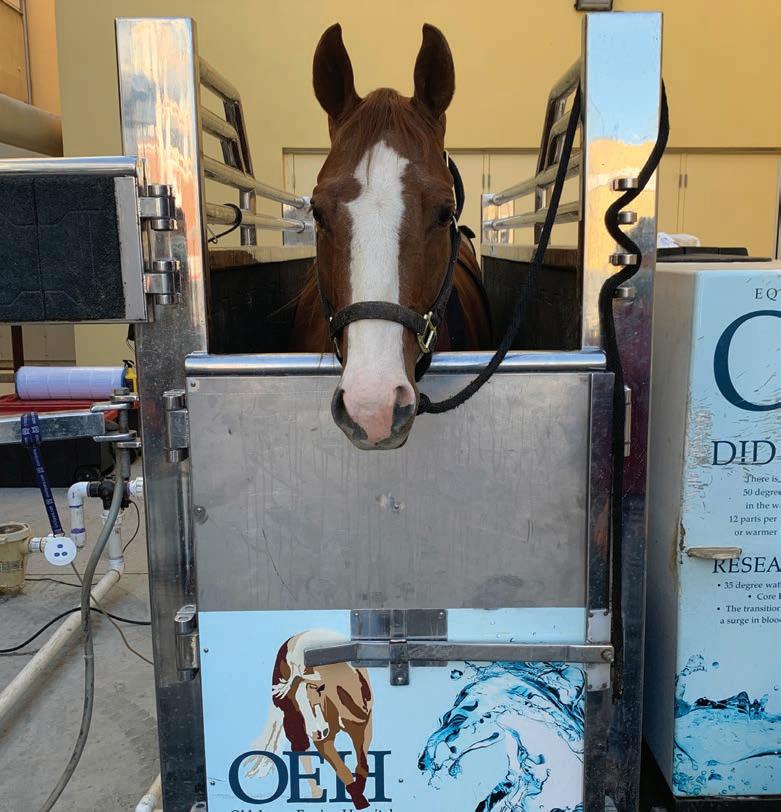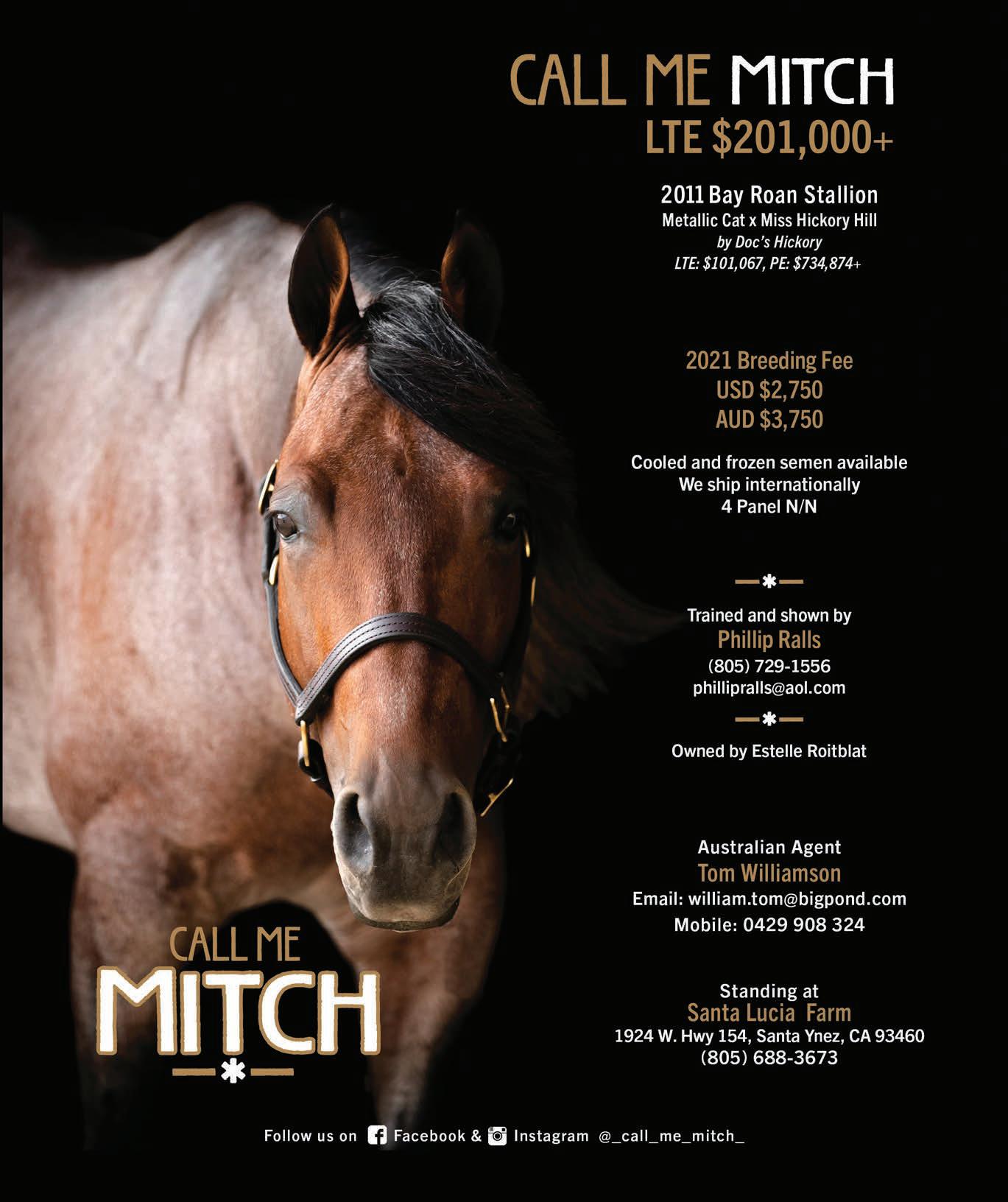
9 minute read
On the Mend



Choosing methods of rehabilitation for your injured horse doesn’t have to be overwhelming.

By Abigail Boatwright

WORK with reined cow horses at a high level long enough, and you’re sure to encounter an injury of some kind. But there’s a lot of treatment methods available to help get horses back to full strength. What can you do to help your horse heal? And how can you keep your horse performing at its best while out on the road?
Joe Carter, DVM, is the National Reined Cow Horse Association’s official veterinarian, and in his years of experience treating cow horses, he’s found that most injuries tend to fall into one of two categories: soft tissue injuries and joints.
“The third might be the foot, but the foot has joints and soft tissue underneath a hoof capsule,” Carter said.
After a joint injury, most horses will spend time on stall rest or pasture turnout, said Carter.
“Different types of injuries require different levels of exercise,” Carter explained. “Typically, we’ll have two to six weeks of stall rest, depending on how much cartilage damage there is. That is something a surgeon might determine.”
Along with stall rest or pasture turnout, Carter often pairs other types of therapy, and says a rehabilitation facility can be helpful in bringing your horse back to health. Luckily, there are many types of therapy with various benefits, as well as varying price points.
Selecting one therapy that will offer a positive end result among the many offerings is often daunting. Here is a breakdown of therapy types from our experts.

1. REGENERATIVE THERAPIES
The most common regenerative therapies tion, which is particularly helpful for soft include injecting stem cells or platelet- tissue injuries. rich plasma into joints or tissue, as well “Soft tissue injuries are the ones that as many types of therapies designed to are historically slow to heal,” Carter said.
1stimulate healing. “Below the horse’s knees and hocks have
“We are using regenerative therapies very poor blood supply, which contribmainly with soft tissue injuries,” Carter utes to slower healing.” said of his veterinary practice. “We see a Increased blood supply leads to faster huge benefit in tendon and suspensory healing. injuries with stem cells.” “Blood supply is what carries away Regenerative therapy is thought to damaged tissue and brings in the healing increase the speed and quality of healing, cells and nutrients,” Carter said. “So, any and Carter says the methods mentioned treatment that involves improving the in this article have been proven to be very blood supply in the lower leg of the horse successful in that regard. Many types of when you have an injury is definitely therapy contribute to increased circula- beneficial.”
Shockwave therapy like the PulseVet can alleviate pain, decrease healing time and improve the quality of healing, especially with soft tissue injuries.
2. SHOCKWAVE THERAPY
Extracorporeal shockwave therapy uses sound waves at the cellular level, encouraging several reactions throughout the horse’s body.
“It’s been proven to alleviate pain, to decrease healing time and improve the 2 quality of the healing, especially with soft tissue injuries,” Carter said. PulseVet Shock Wave is an electrohydraulic shock wave, which can recruit stem cells and positively regulate inflammatory proteins associated with osteoarthritis. It increases blood supply to the horse’s targeted area, stimulates the healing process and reducing inflammation.
“This non-invasive, proven treatment is helpful for healing soft tissue injuries such as tendon or suspensory injuries; however, it is also proven effective for a variety of conditions, including bone healing, back and neck pain, and osteoarthritis/degenerative joint disease,” Trudy Gage, of PulseVet, said.
PulseVet’s technology has been documented in extensive animal and human research and clinical studies. The device
is covered by equine and small animal insurance, and is sold and used exclusively by licensed veterinarians.
“Electrohydraulic technology, as used by PulseVet, creates a primary-focused shockwave, and this leads to much larger volumes of tissue being treated per shock [compared to other types of shockwave devices],” Gage said.
3. ELECTROMAGNETIC THERAPY

Electromagnetic therapy such as the P3
3uses electromagnetic waves to improve circulation in the lower limbs, as well as treating muscle injuries, back injuries and back soreness. It’s also helpful for cutting down on soreness after an event.
“Like a massage it’ll make muscles subtly contract and relax, which releases and relieves tightness, and encourage circulation to move lactic acid buildup out into the bloodstream to be excreted, which can reduce muscle soreness,” Carter said.
A vibrating platform like the TheraPlate can relax your horse both mentally and physically, while also boosting blood circulation.
4. MASSAGE
4Massage is an ancient—yet still relevant—method of treatment that offers similar benefits as electromagnetic therapy, as well as increased stretching and flexibility for your horse. Carter advises looking for a licensed massage therapist to get the most scientifically proven treatments.

Equine massage can encourage circulation throughout your horse’s body, including its legs, as well as other benefits.
5. VIBRATING PLATFORM
5A TheraPlate is one brand of a vibrating platform that is relaxing for the horse, improves muscle soreness and encourages blood flow. Carter says it offers both mental and physical benefits.
Cassie Adams, owner of Fossil Creek Equine Center, says many of her facility’s cow horse clients enjoy TheraPlate treatment.
“The TheraPlate keeps them nice and relaxed, gets their blood flowing and gets everything moving along a little bit faster,” Adams said.
6. LASER THERAPY
6Laser therapy is photoelectric, meaning it employs light therapy. Carter says shockwave, electromagnetic and laser therapies are all ideal for soft tissue injuries, particularly on lower legs.
“Laser therapy increases blood flow and improve the quality of healing as well,” Carter said.
7. COLD THERAPIES
Cold treatment on your horse’s legs and muscles can help relieve pain and inflammation. Carter says methods include ice
7boots, hosing cold water on limbs and the most effective—cold saltwater therapy.
“Cold saltwater therapy actually combines the benefits of salt water with cold, turbulation and oxygenation,” he explained. “The osmolarity of the salt in the water pulls fluid out of swollen tissue. The oxygen with the turbulators help keep the water around 35 degrees, which is colder than the temperature of a cold bucket of water would be.”
8. BLISTERS, SWEATS AND POULTICES
These old-fashioned remedies offer some of the same benefits as shockwave, electromagnetic and laser therapy: increased circulation.
“We’ve got other ways of doing it now that might be a little easier on the horse,
8but these methods have been effective for decades and decades of horse injuries,” Carter said.
The veterinarian often recommends alternating hot and cold therapy—icing in the morning or after some light exercise, and then putting the horse in a sweat or a poultice at night to pull swelling and soreness from the legs.

A portable cold-water spa allows for Dr. Carter to provide therapeutic help at many NRCHA events.
///// REHAB-TO-GO
Caring for your horse’s body at competition may not include every method possible, but there are many ways to improve your horse’s health away from home. Dr. Joe Carter suggests any of the following:
• cold saltwater therapy
(the preferred method of both Carter and
Cassie Adams) • poultices • vibrating plates like the TheraPlate
Adams also recommends: • laser therapy • pulsing electromagnetic therapy (PEMF)
9. EXERCISERS
Once your horse can begin returning to exercise, Carter says several methods can help make movement easier and more controlled.
“EuroXcisers and similar machines can jog horses in a controlled manner,”he pointed out. “Hand-walking and some other kinds of exercise like swimming in
9a pool or on a treadmill allow for complete non-weight on the horse’s joints and legs.”
An AquaTred water treadmill allows for 60 percent less weight on the horse’s legs, noted Carter.
Fossil Creek Equine Center has an AquaPacer underwater treadmill that can be filled with different levels of water and adjusts to move at varying speeds at varying speeds. Adams says it’s ideal for horses recovering from injury, as well as for conditioning a horse that needs less concussion on its joints, tendons and ligaments as it transitions back to work.
Swimming or a combination of water and treadmill are excellent ways to re-condition a healing horse.

Once your horse can handle more strenuous exercise, you may turn to a machine that works the horse on the hard ground, with no rider for two to four weeks to build its cardiovascular conditioning and muscle and tendon strength.
“Next, they’ll typically enter a 30-day legging-up phase where there’s a rider on their back, doing a lot of walking, trotting and loping, building the horse’s strength up and moving them forward to be ready to resume regular training,” Carter said.
CAVEATS AND CONCERNS
Adams says if your horse has been seriously injured or out of work for a while, it may take longer for your horse to heal and gain condition.
As a warning, Carter cautions against turning out an injured horse to selfexercise without working with your veterinarian.
“It’s refreshing to their minds to get out of the stall, and it also tends to invigorate their joints,” he said. “But I have seen many times, a horse with a mild injury ruined when it got worse with uncontrolled exercise. We could see an injury like mild tendonitis turn into a bowed tendon with self-exercise, so you really need to have a good relationship with your veterinarian and make a plan for your individual horse.”
Carter recommends teaming up with your veterinarian and, if available, a rehabilitation facility, to discuss your goals and options available.
“Get an accurate diagnosis and a clear understanding of it, then work with your veterinarian to develop a game plan that will achieve your goals and make your horse healthy and happy,” Carter concluded.
///// MEET THE EXPERTS
JOE CARTER, DVM, founded and owns Oklahoma Equine Hospital, and he’s also the official veterinarian of the NRCHA. Oklahoma Equine Hospital has two locations, offers a variety of rehabilitation therapies, and clients are located all over Oklahoma, as well as parts of Texas. Carter specializes in horse show medicine and lameness. oklahomaequinehospital.com
CASSIE ADAMS is the owner and manager of Fossil Creek Equine Center in Boerne, Texas, a full-service rehabilitation facility. fossilcreekequine.com
TRUDY GAGE is the territory manager and client education coordinator for PulseVet. pulsevet.com











